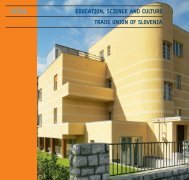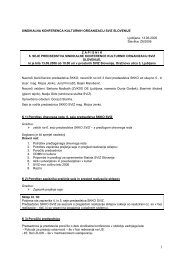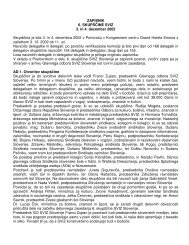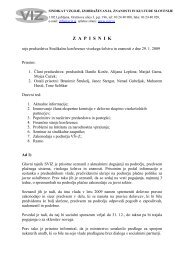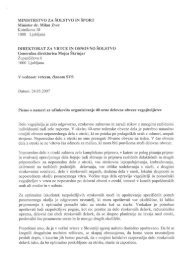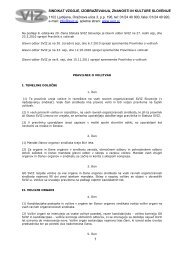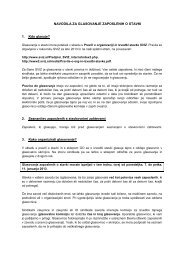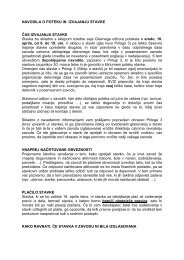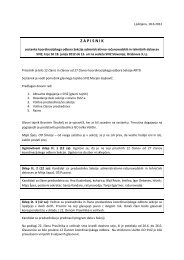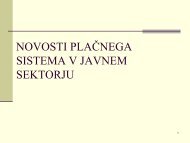You also want an ePaper? Increase the reach of your titles
YUMPU automatically turns print PDFs into web optimized ePapers that Google loves.
koračniški utrip), solistična linija pa postaja izrazito virtuozna. Čajkovski<br />
je Mozarta prav gotovo oboževal, a vendarle ne toliko, da bi žrtvoval<br />
svoj lastni glasbeni izraz.<br />
We justifiably regard Joseph Haydn as the ‘father’ of the symphony. Although<br />
he was not the first composer of symphonies he did write more than<br />
one hundred such works and made the most decisive contribution to the<br />
development of the form, for which he undoubtedly deserves first place<br />
amongst the early symphonic composers. Haydn gained the first Major success<br />
in his career in 1761, when he became the assistant chapel master in the<br />
court of Prince Paul Anton Esterházy. The latter was an extraordinarily well<br />
educated man, and wanted to transform his new court in Eisenstadt into a<br />
contemporary cultural centre. Due to the fact that the incumbent chapel<br />
master, G.J. Werner, was a rather conservative figure, Prince Esterházy placed<br />
at his side Joseph Haydn, whose contract was somewhat unusual: he was<br />
clearly established in second place to Werner, but at the same time he was<br />
given all of the essential tasks that should fall to the ‘principal’ chapel master.<br />
Thus Haydn was responsible for the maintenance of the music archive and<br />
instruments, he had to teach singing, he was active as a performer (both<br />
as a soloist and as a member of the orchestra), and he was also obliged “to<br />
compose according to the wishes of the Prince”. Of course, being placed in<br />
such an unusual position led Haydn to a number of disputes with Werner,<br />
and after the death of the Prince the situation became even more tense, as<br />
the new master, Paul Anton’s brother Nicholas, had an even more progressive<br />
orientation in terms of his aesthetic outlook. Nonetheless, Haydn was only<br />
able to take up the position of chapel master in 1765, after Werner’s death.<br />
Although his various conflicts with Werner must have been rather stressful<br />
during the four years in which they worked together, the period was undoubtedly<br />
most significant and decisive for the development of the symphony: in<br />
these years Haydn composed symphonies at the greatest rate of his career,<br />
completing twenty-five such works. Most of the symphonies written during<br />
this period experiment with various models, seeking a balance between light<br />
and serious expression, between the traditional and the modern, and between<br />
the Italian and the Austrian. The most significant innovation, however, was<br />
linked with the introduction of the fourth movement and the definition of<br />
the genre as a serious artistic genre, demanding attentive listening.<br />
In Symphony No. 39 we could even find certain traits of ‘sturm und drang’, a<br />
style that Haydn engaged with only in subsequent years – the work is written<br />
in a Minor key, which is a noticeable exception for classical music and implies<br />
certain expressive connotations. Many observers are even convinced that<br />
it is precisely this symphony that had an important influence on Mozart’s<br />
superb ‘Little’ Symphony in G Minor, K 183, which is also characterised by an<br />
unusual ensemble with four horns. The first movement brings an unsettled<br />
atmosphere, which is intensified by the breaks that interrupt the appearance<br />
of the first theme. A desire for experimentation is also demonstrated<br />
PROGRAM / PROGRAM<br />
123



